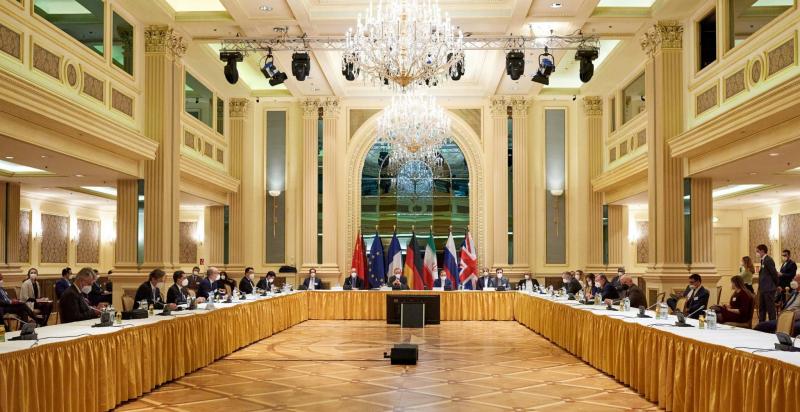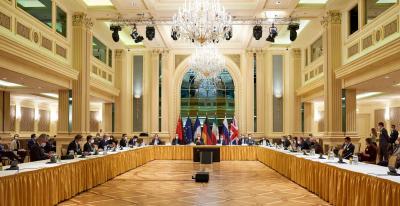Under the title "Vienna Negotiations Ongoing... Complex Keys and Steps to Lift Sanctions," the article on Al Arabiya.net discusses the nuclear negotiations in Vienna. The article notes that both Western and Iranian negotiators agree that the path of the talks will not be easy at all, as evidenced by numerous statements from participants.
It mentioned that yesterday, Chief Nuclear Negotiator Abbas Araghchi indicated that "several difficulties await those discussions," adding in a press interview, "Everyone agrees on the necessity of engaging in serious and practical work to prepare a list of sanctions that the United States must lift and the measures Iran must take."
Al Arabiya's correspondent reported that technical committee meetings are expected to continue today, Friday, as announced by Russia's permanent representative to international organizations in Vienna, Mikhail Ulyanov (although no official confirmation has been issued in this regard). The Russian ambassador also stated that a meeting would occur today between the heads of delegations from the P4+1 countries with the U.S. delegation (without Iran).
### "The Devil is in the Details"
However, the most pressing question lies in the details, as the saying goes, "the devil is in the details," referring to the complex steps that both parties must take to lift part of the sanctions on one hand and for Iran to return to its commitments on the other. Is it easy to specify the steps that the United States must take?
To answer this question, observers clarify that these steps will not be easy but rather complex and difficult, requiring continuous and extended meetings, according to a previous report by The Guardian.
### 1500 Sanctions
When the United States signed the original deal in 2015, it decisively distinguished between lifting pre-existing nuclear-related sanctions and other sanctions it would maintain regarding Iran's activities related to terrorism, its ballistic missile program, human rights violations, or cybercrimes.
Washington's position has become clear regarding sticking to some of the sanctions imposed by former President Donald Trump, which are unrelated to nuclear weapons, and therefore cannot be lifted. For example, the previous U.S. administration imposed sanctions on Iranian-sponsored hackers and intruders last September, as well as on three judges and three deputies of the Iranian Nuclear Energy Organization involved in the ballistic missile program, while the Biden administration added sanctions against human rights violators.
### Blurred Lines
Perhaps the step that complicated matters further and increased the difficulty of lifting some sanctions is former President Trump's blurring of the lines between nuclear and non-nuclear sanctions by renaming or describing many of these nuclear-related sanctions as being related to terrorism. Thus, he imposed sanctions not only on the Islamic Revolutionary Guard Corps but also on the central bank, the Ministry of Oil, and the National Iranian Oil Company.
The motivation behind Trump's direction was his assertion that these institutions transferred funds to Hezbollah and similar armed militias and organizations. This is just the tip of the iceberg of complex sanctions being negotiated, totaling 1500 sanctions that need to be studied and categorized.
Therefore, reaching an agreed-upon list of the sanctions imposed after 2016, which both sides consider linked to nuclear activities, is complex and involves a lengthy series of diplomatic and technical shuttle talks.




